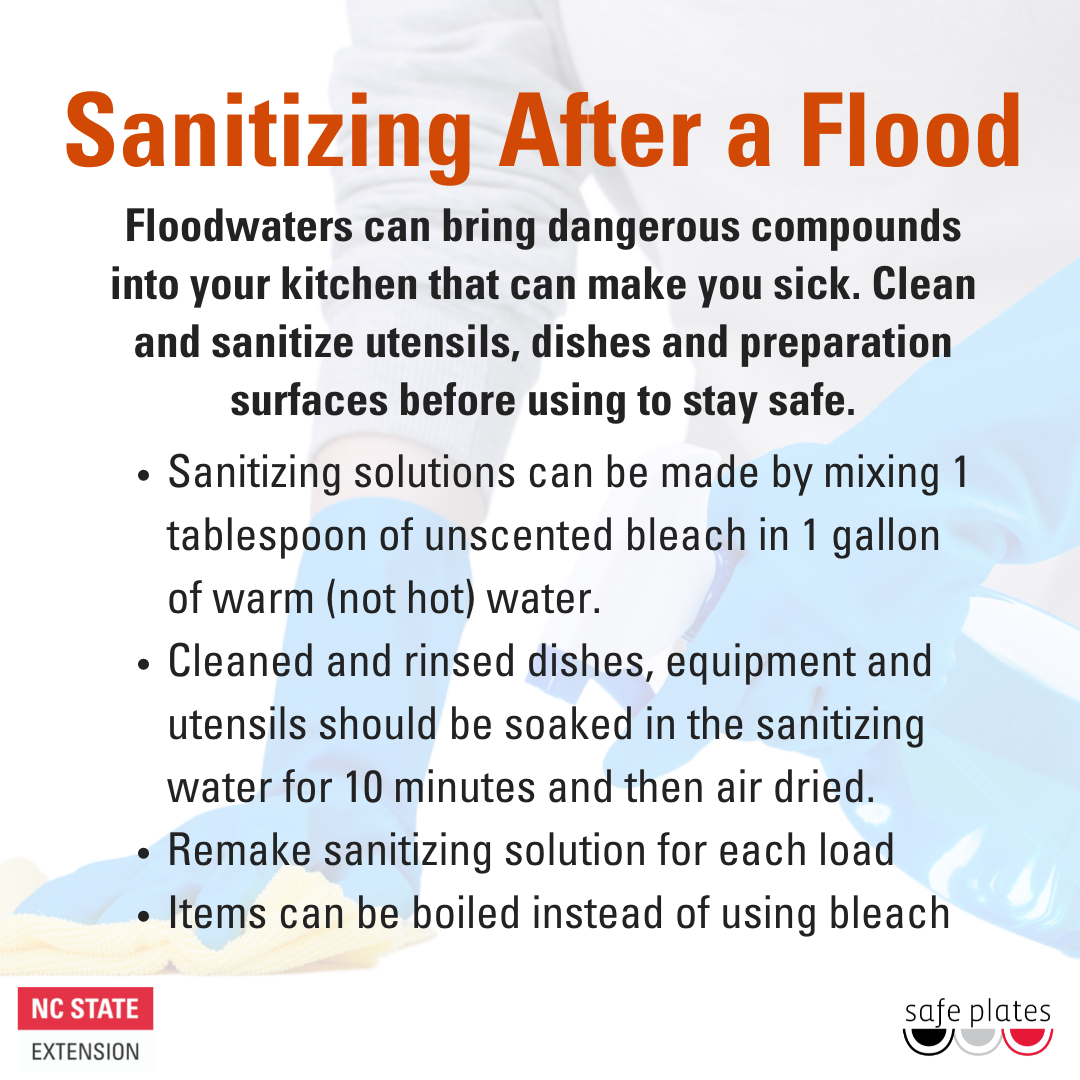Food Safety Considerations After a Flood
go.ncsu.edu/readext?816820
en Español / em Português
El inglés es el idioma de control de esta página. En la medida en que haya algún conflicto entre la traducción al inglés y la traducción, el inglés prevalece.
Al hacer clic en el enlace de traducción se activa un servicio de traducción gratuito para convertir la página al español. Al igual que con cualquier traducción por Internet, la conversión no es sensible al contexto y puede que no traduzca el texto en su significado original. NC State Extension no garantiza la exactitud del texto traducido. Por favor, tenga en cuenta que algunas aplicaciones y/o servicios pueden no funcionar como se espera cuando se traducen.
Português
Inglês é o idioma de controle desta página. Na medida que haja algum conflito entre o texto original em Inglês e a tradução, o Inglês prevalece.
Ao clicar no link de tradução, um serviço gratuito de tradução será ativado para converter a página para o Português. Como em qualquer tradução pela internet, a conversão não é sensivel ao contexto e pode não ocorrer a tradução para o significado orginal. O serviço de Extensão da Carolina do Norte (NC State Extension) não garante a exatidão do texto traduzido. Por favor, observe que algumas funções ou serviços podem não funcionar como esperado após a tradução.
English
English is the controlling language of this page. To the extent there is any conflict between the English text and the translation, English controls.
Clicking on the translation link activates a free translation service to convert the page to Spanish. As with any Internet translation, the conversion is not context-sensitive and may not translate the text to its original meaning. NC State Extension does not guarantee the accuracy of the translated text. Please note that some applications and/or services may not function as expected when translated.
Collapse ▲Communities in Western North Carolina have recently experienced floodwater damage and need to know important food safety information as they work on recovery. Floodwater can bring silt, raw sewage, oil, and chemicals into your kitchen and contaminate stored food making it unsafe to eat. Consider these recommendations for keeping food safe after a flood.
Kitchen Clean Up After Flooding
Compounds in floodwater can leave dangerous bacteria or chemicals on your food or utensils and equipment such as pots, pans, serving and storage containers making food unsafe to eat. Proper cleaning and sanitizing can help keep food safe. For safety, water for cleaning should be of the same quality as that used for drinking or cooking.

Safe Food After Flooding
As individuals go through their kitchen and start to sift through their food, there are certain foods that are safe to keep and others that need to be tossed for safety reasons. Foods in waterproof food storage containers or commercially prepared jars, cans, and retort pouches that have contacted flood waters can be kept if they are properly cleaned and sanitized.

Garden Recovery After Flooding
There is an increased risk of E. coli, Listeria, Vibrio, Salmonella, Hepatitis A, and Norovirus when eating produce from a flooded garden. If produce is unfit to eat because of floodwaters, do not can.
For all other food safety disaster preparedness and recovery resources such as experiencing power outages, boil water advisories, etc., see the Disaster Preparedness website.


